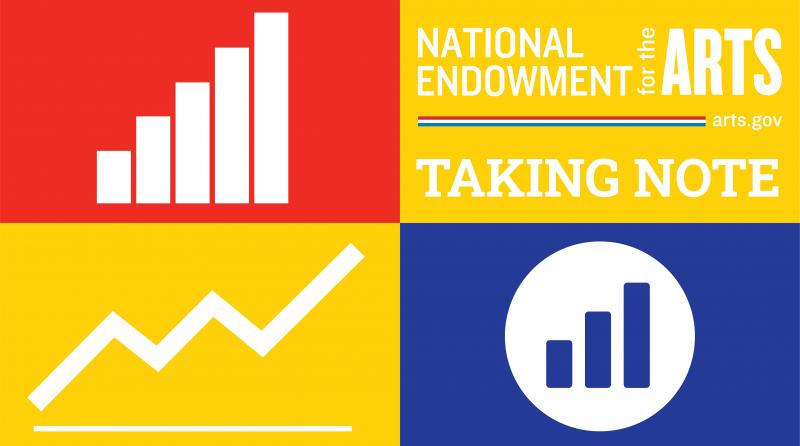Taking Note: Arts Research Grants Mark Ten-Year Anniversary

The Research Grants in the Arts (RGA) program is ten years old! This year’s awards, which were announced this morning as part of the agency's first round of FY 2021 funding, include 14 new projects covering three broad areas of study. Those topics are: the arts' relationship to cognition and mental health, particularly among older adults; the use of arts programs to prevent school bullying; and the arts' ability to enhance social interactions among people from racially and ethnically diverse backgrounds.
(For descriptions of all newly funded projects, see our Recent Grants page. Interested applications for the FY 2022 RGA program should visit our guidelines, which appeared online last week.)
Looking back on a decade of arts research grants, I wanted to explain the program’s evolution over time and to highlight sample projects.
In the first two years of the program, we limited funding to secondary projects involving analysis of secondary datasets. These projects typically relied on two types of data sources: 1) large-scale, publicly accessible datasets such as the Survey for Public Participation in the Arts and IRS 990 Forms, and 2) small-scale studies, for which researchers already were in the process of collecting or analyzing data from research participants.
For example, we supported a study on causal factors pertaining to the "birth" and "survival" rates of arts and cultural institutions. This project analyzed IRS Form 990s for nonprofit arts and cultural institutions so as to produce and compare survival rates over a 20-year period, and to explain why some organizations thrive and why others struggle. Another notable study from that period examined how engagement in the arts can “get under the skin” and regulate the stress hormone cortisol in young children.
Starting in 2014, and over the next two years, we expanded the RGA program to include research projects featuring primary data collection. Ever since, more and more researchers have approached us with exciting study ideas—many of which we have been able to fund. They include: an evaluation of a literacy-based arts integration model in secondary schools to determine whether student participation is associated with "21st-century skills" development; a study of the relationships between universities and creative clusters in the Intermountain West region; and a study of artists' employment patterns relative to prior decades, and how artists found new markets during and after a recession.
In 2017, we again revised the guidelines, this time lifting the award dollar ceiling for projects that used quasi-experimental and experimental methods, and that also compared the outcomes of arts groups with non-arts control or comparison groups. When done rigorously, we reasoned, such projects are costly.
Indeed, we were gratified to see high demand for this category of award. Subsequently, we supported projects that included: a series of randomized control trial studies examining changes in social skills among adults and children who read fiction; a qualitative study about community anchors that have arts programming, such as social clubs, religious institutions, and small businesses; and randomized, controlled studies examining the psychosocial impact of an intergenerational storytelling program for teenagers and older adults. Many of these projects are still in progress, but we expect to make final research results available on our Research Study Findings webpage.
Recently, we made a few more changes to the program guidelines. We now indicate that higher-level dollar awards will be made to projects that meet one or more of the following conditions: 1) use experimental/quasi-experimental study design methods that include at least one arts-based intervention group and at least one non-arts-based control/comparison group; or 2) use experimental/quasi-experimental study design methods to compare different delivery methods (e.g., virtual versus in-person engagement) or “dosing” strategies for an art form, arts program, or intervention; and/or 3) demonstrate high potential for utility to arts practitioners, policymakers, or the general public.
Even while we welcome novel research ideas, it is important to stress that revisiting old questions in new contexts can contribute mightily to public knowledge about how the arts work. This insight is worth pondering while the arts and cultural sector weathers a prolonged “shock” from the COVID-19 pandemic. Possible lines of research inquiry may include understanding the sector’s prospects for recovery and resilience—but also how the arts (in-person and virtually) have helped to sustain individuals and communities during this difficult period.
No matter what research questions you may want to pursue, we hope you will reach out to the Office of Research & Analysis if you wish to learn more about how to apply for the FY 2022 RGA awards—or to our NEA Research Labs program, for which we are also currently accepting applications. We also are hosting a guidelines webinar on February 9, at 3pm Eastern Time. Register here, or access the archive afterwards here. Feel free to email us with any questions at nearesearchgrants@arts.gov.




